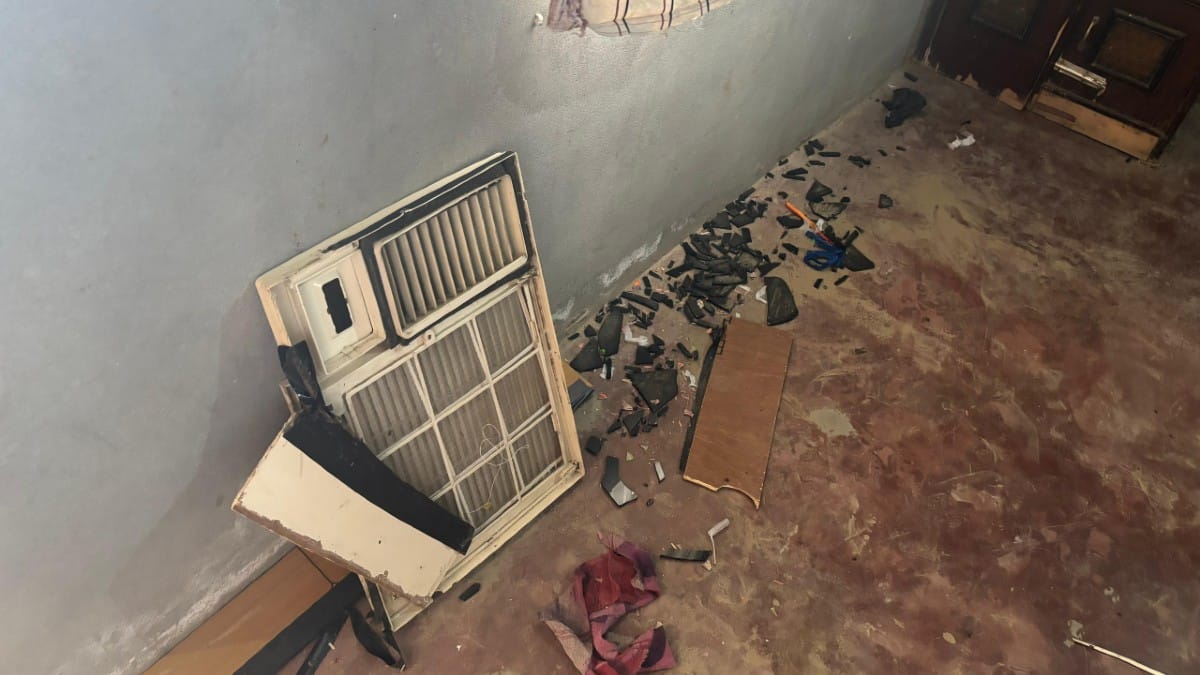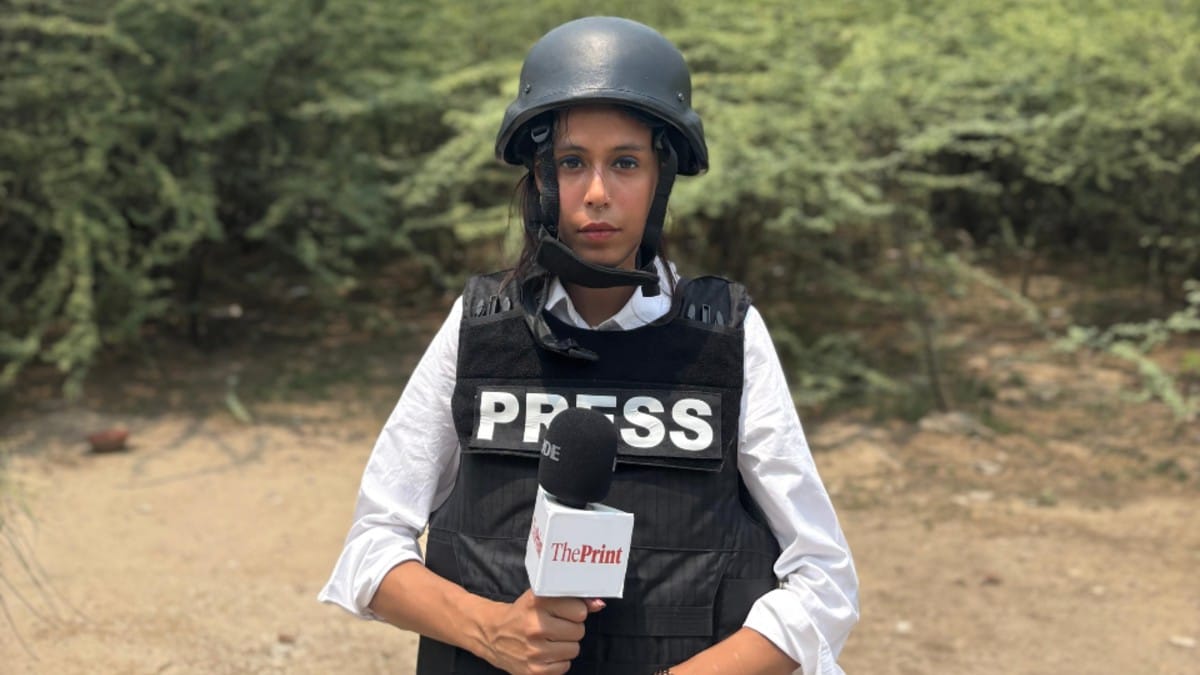Ferozepur/Bathinda: “I don’t think she’s going to make it, but I hope she does. I’m hoping for a miracle,” Jaswant Singh said, clutching my hand as he lay in his hospital bed. “Have the doctors said anything?” he asked once more, tears streaming down his face.
“You’re a journalist. Have you heard of anyone surviving something like this?”
When I asked him about his splinter injuries, he said, “My mother pushed me to the side, so she suffered the most from the explosion. It should have been me.”
He wanted both relief and certainty and I had none to offer except holding his hand tight. He wanted to know if there’s hope. On Tuesday, his mother Sukhwinder Kaur succumbed to her burn injuries. When I heard the news, the fear, guilt—and some hope—I saw on his face that day flashed before my eyes. Jaswant’s worst fear had come true.

His father, Lakhwinder is fighting for life in Ludhiana. When I had met Lakhwinder, his eyes were swollen, his body wrapped in white bandages. As I stood beside the area from where the nurses were taking his stretcher, I heard him cry inconsolably. “Do whatever you can, I want Sukhwinder back,” he told his aunt Vidya Kaur.
Pakistani drones turned this family’s lives upside down last. When I visited their home, buffaloes injured in the attack stood there, occasionally grunting in pain.
The previous day, as the situation intensified, a group of 10 reporters, including myself, was instructed to pack up. I was assigned to Bathinda and the bordering district of Ferozepur.
Also Read: Stoicism with a hint of anguish—a view of India-Pakistan tensions from border villages near Amritsar
Of life & loss
I’d be lying if I say I wasn’t overwhelmed at the opportunity to be part of this team covering the unfolding conflict. The night I started from Delhi, a swarm of drones had been flying over Punjab. Their debris was found at multiple locations, including at Tungwali village.
Barely 70 metres away, Gurjant Singh stared at the damage it had caused to his house in the Tungwali village. Glass shards were all over his verandah. As I stepped inside, Singh said, “Some want a jung (war). Do they not think of what it does to people”.

His words struck a chord in me. It’s not like we, as reporters, are unaware of the consequences—death, bloodshed, and devastation—that came with violence.
But when you’re on the ground, especially during moments like these, the rush to break news, capture footage, and file reports leave little room to process and reflect. As I left Tungwali, the only thought that stayed with me was, “Thank God no one was hurt here.”
I covered more than 1,300 kilometers during my trip which ended a day after India and Pakistan reached a bilateral understanding to pause military activity.
Over the course of three days, I witnessed a striking tale of life and loss—a litter of puppies born Friday night at the height of the conflict, drone debris at the heart of the lush green farms, families of burn victims praying for a miracle, displacement and an outpouring of Punjab’s patriotism and resilience.
In this age of technology-driven war, the unwavering unity and compassion of the Punjabi people stood out as a powerful antonym to lurking fear and chaos.
In some border villages, which previously bore the brunt of India-Pakistan wars, the elderly Punjabis largely stayed in their homes, but they sent the younger people to stay with relatives. Some had even served in the 1971 India-Pakistan war. In all my interactions with them, I sensed no panic.
However, in Hussainwala, the situation was a little more complex.
The scars of 1971 had resurfaced after 54 years. Villagers evacuated their homes, fearing a repeat of 1971 when the connecting bridge had been blown up to prevent Pakistani troops from entering. Most of them from the area had left in tractors, carts and on motorbikes. Some young men, well built in comparison to others, stayed behind.
‘Gudiya… you can’t leave without roti’
Despite the damage to his home, Gurjant Singh invited me in for tea. “We’re just cleaning up the mess—you can sit inside and enjoy your tea in peace,” he said. I was taken aback by his generosity and warmth.
“Gudiya… you can’t leave without roti,” Iqra Bai had told me. She and other villagers from Ferozepur had built bunkers. Puran Singh, the sarpanch’s father, took me on his motorcycle to show the capsicum, colocasia and chilli fields.

“That’s the border, if it were normal times, I would have taken you closer. We have fields in the buffer zone at the international border,” Singh told me as his wife, Banto Bai, tried to convince me to have a glass of milk.
When I was leaving, Iqra Bai, Puran Singh, Banto Bai and Suraj packed 4-5 kilograms of capsicum and chilli. They plucked it from their fields in the buffer zone, where only farmers with a border pass could go. I was scared, I stopped them saying it’s not the right time but they were adamant.
“Everyone will die one day. Can’t lead our lives feeling scared. We want you to taste the vegetables from these farms. Remember us when you eat and may say a prayer or two for the safety of our people and jawans,” Banto Bai said.
Stars, drones & blackouts
As someone who has been brought up in Assam, I wasn’t new to darkness as the electricity would regularly conk off when I was growing up. But the darkness I witnessed in Punjab was different. It was a blackout.

It was daunting to say the least. Streets remained empty and the evening air screamed of despair. As soon the blackout would come into force, men and women would sit tight with their families. Youngsters took to social media to keep track of the latest on drones.
Around 7 pm, sometimes villagers would voluntarily switch off the lights including the street lights even before the district authorities ordered it. In the evenings under normal circumstances when there was no electricity, villagers would go for a stroll. They would sit and discuss politics, society, and do casual star gazing.
But these days, looking up to the sky and noting something white meant danger.
“One night, we saw so many objects flying in the sky. We also saw the red lights, which could have been the security forces trying to hit them. Now I think some of us would be scared to even sit under the stars,” Gurdeep Singh said.
One day in Punjab, as I was talking to the hotel staff, someone screamed that drones are flying over in full force. When I saw the lights pass through the dark skies, my feet went numb.
(Edited by Ajeet Kumar Tiwari)
Also Read: Amid sirens & blackouts in Bhuj, I listened to stories of 1971 from steady voices, with a cup of tea

